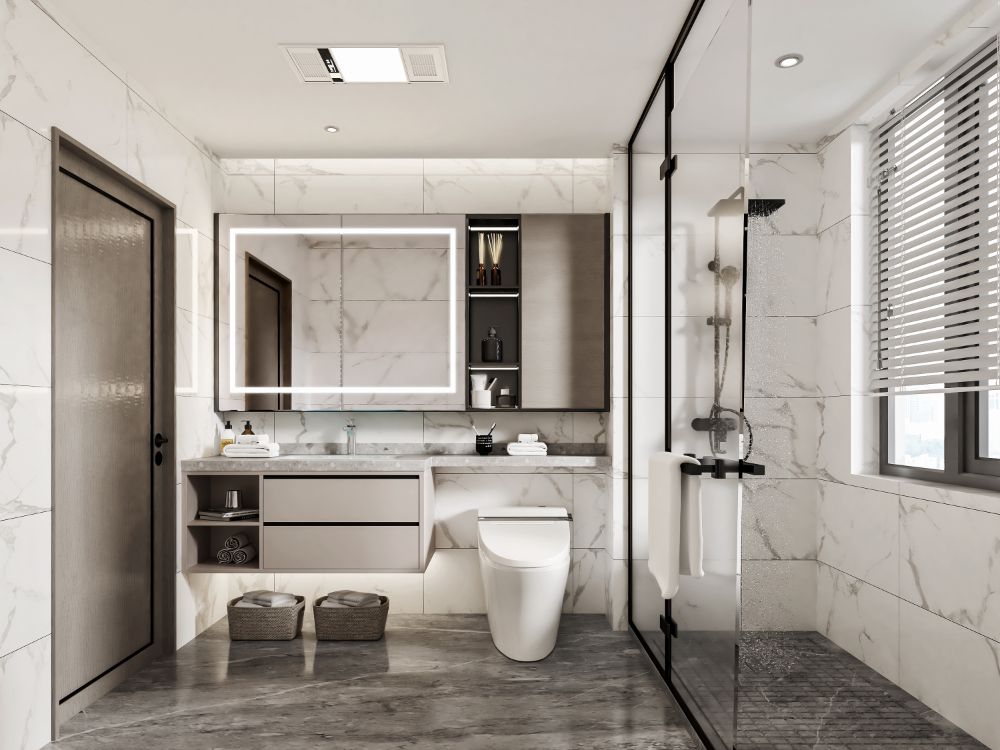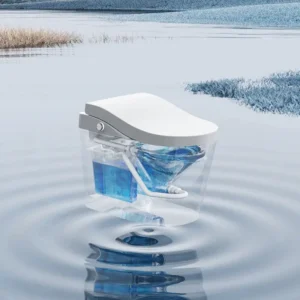Introduction
Do you ever feel like the toilet has been left behind in the age of smart homes? Well, that’s quickly changing. The smart toilet—a concept pioneered in Japan, where 80% of homes now use some form of automated unit—is fundamentally transforming the bathroom experience. These aren't just extravagant gadgets; they are high-efficiency, automated sanitary facilities that integrate advanced engineering to maximize comfort and cleanliness, offering a seamless, hands-free experience that leaves traditional fixtures in the past.
Hands-Free Luxury: Comfort and Customization
What exactly makes this futuristic fixture so appealing? It boils down to personalized comfort and automation. Smart toilets minimize effort while maximizing hygiene, turning a necessary chore into a moment of daily luxury.
The Core Experience: Heat, Water, and Air
Say goodbye to the shock of a cold ceramic seat! Smart toilets feature integrated, customizable heated seating, allowing you to set the perfect temperature for immediate comfort. The true centerpiece is the built-in bidet system, which provides an unparalleled level of personal cleanliness. You get instant warm water, adjustable pressure control, and diverse cleansing modes (like hip wash or massage). This spotless clean is then completed with a gentle, warm air dryer, making toilet paper largely obsolete. Adding to the convenience, motion sensors automatically handle the opening, closing, and flushing, promoting a hands-free standard that enhances overall sanitation.
Clean by Design: Advanced Sanitization
Smart toilets are actively designed to be cleaner than conventional ones. Many models incorporate sophisticated, chemical-free methods to maintain sterility. They use UV light sterilization and electrolyzed water to kill germs and sanitize the nozzle and bowl after each use.
Sustainability in the Bathroom: Less Paper, Less Water
Are they green? Surprisingly, yes! Smart toilets are highly water-efficient, often achieving consumption as low as 0.8 gallons per flush. But the biggest win is sustainability. By relying on the bidet and air dryer instead of paper, they reduce massive amounts of waste from manufacturing and logistics. While they have a higher initial carbon footprint from their electronic components, life-cycle assessments indicate that the long-term savings in water and the drastic reduction in toilet paper usage offset this impact over time, making them the superior environmental choice.
Beyond the Flush: Health Monitoring & Accessibility
The next generation of smart toilets promises to be pivotal for wellness. Advanced systems are currently being developed to integrate biosensors, allowing for non-invasive, continuous urinalysis. This passive monitoring can track essential health markers like hydration and sodium intake—critical data for managing conditions like hypertension and chronic disease.
For practical accessibility, many models are designed to be ADA-compliant, offering chair-height seating (17 to 19 inches high) combined with automatic functions like auto-flushing. This combination delivers luxury while ensuring greater independence and ease of use for seniors or those with limited mobility.
The Practical Leap: Investment and Setup
While the benefits are clear, smart toilets represent a premium investment. Costs vary widely, generally ranging from around $600 to $5,000 or more, depending on the brand and integrated features. Installation usually requires professional plumbing and electrical work (to power the heating and automation), with typical labor costs running between $185 and $400.
Conclusion: The Smart Choice for a Modern Home
The smart toilet is fundamentally redefining personal hygiene. It’s an investment that merges luxury and responsibility, offering superior comfort, hands-free cleanliness, enhanced accessibility, and tangible environmental savings. For the forward-thinking homeowner, choosing a smart toilet is choosing a future where the bathroom is a proactive part of overall wellness and sustainability.


